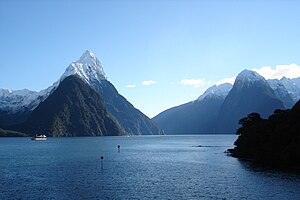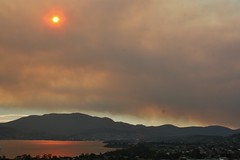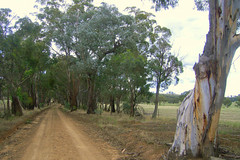 |
| Atlantic (Photo credit: geodesic) |
We’ve heard quite a bit about the health of our oceans lately.
Australian yachtsman Ivan Macfadyen recently retraced his oceanic voyage of ten years ago from Melbourne to Japan, finding an absence of sea birds and an ocean of junk.
A recent paper shows the pervasiveness of plastic in even the smallest ocean animals. It’s clear our oceans face many problems. But the good news is we’ve started to work out solutions.
Many problems
Life on our Planet is dependent upon the oceans (yet) in the space of a only a few decades the oceans have become the setting for an expanding list of problems.So began the report of the Independent World Commission on the Oceans some 15 years ago, highlighting changes people have unleashed on this watery 70% of the planet.
Today we’ve moved from asking whether we can change the oceans, to if we can stop changing them.
Often our focus naturally falls on visible and immediately tangible changes, like the virtual collapse of the northwest Atlantic cod industry, the damage being done to the Great Barrier Reef from land-based pollution, or the impact of lionfish on Caribbean reefs.
Such challenges may suggest seductively simple solutions: introduction of perfectly calculated quotas; tighter regulations on land-based activities; control of invasive species? Problem solved.
Unfortunately, some of the least visible changes are also the most threatening, difficult to communicate and hardest to solve. Ocean acidification is a good example, recently highlighted in The Conversation.
Researchers have found that the oceans act as the world’s largest carbon sink, soaking up approximately one-third of the carbon emissions generated due to human activities over the past 200 years, altering ocean chemistry and causing acidity levels to rise to their highest levels in at least 800,000 years.
Increased acidity is causing a drop in the availability of carbonate ions, which are a crucial component of the skeletons of many marine organisms - from algae to coral reefs, from lobsters to scallops - all important to marine food chains.
With an estimated 2.6 billion people relying on the ocean for their primary source of protein, both the poor and the gourmands could feel the impacts.
We need to think beyond marine parks
Many of the world’s key practitioners for developing and managing marine protected areas just met in Marseilles. The discussions there focused, as usual, on the number, size, and location of protected areas, as well as how rapidly they can be created.
But it is just this sort of simplistic thinking that led to the creation of the large “no-take” protected area in the British Indian Ocean Territory in 2010. Hurriedly declared in the heat of an election, this area lacked an effective understanding of the socio-cultural context of the region.
And while ensuring monitoring and prevention of fishing in the short term, there is no sustainable plan into the future. All in all, it was like applying a 1960s paradigm in the 21st century.
We need to have protected areas in national waters (and on the high seas), but not as we currently know them. They need to be designed to respond to the three-dimensional nature of the oceans, and with sustainable management in mind.
Management needs of the ocean floor might be different from those of the mid-water column, and different again from those of surface waters. This means managing a range of ecosystems in all their complexity.
Problems with complex adaptive systems, like oceans, require complex solutions. The NEOPS research program at the University of Tokyo is attempting just that.
First it has to define ocean provinces based on assessment of material cycles and ecosystem functions. Second, it will evaluate the bundle of ecosystem functions, and ultimately services, that are provided from these provinces.
A crucial third step bridges the science-policy divide by proposing governance mechanisms to sustainably manage these dynamic systems. Without such integrated research, understanding of complex processes will remain piecemeal, and largely removed from global policy and decision-making.
Ocean governance and management is a complex issue, especially on the high seas beyond the reach of national territories. Recently the UN General Assembly, and the Convention on Biological Diversity, have confirmed support for a conservation strategy for the high seas.
While identifying important areas is fine, the question is how should they be managed? Since 1998, the convention has been elaborating the Ecosystem Approach which has 12 principles.
These principles work on land and sea to help manage biodiversity and deliver ecosystem services. This approach provides an excellent basis for good management practises in the oceans, from surface to abyss.
Embarking on the three tracks of good management design for the oceans, set in an effective governance framework, and backed up by innovative and broadly-focused research (such as NEOPS) can deliver healthier oceans into the future, even in the face of the sustained onslaught we have unleashed on this vital ecosystem.
Oh, and by the way - that lionfish invasion in the Caribbean? Turns out one way to deal with the problem is to eat them …
Peter Bridgewater is Chair of the UK Joint Nature Conservation Committee.
Robert Blasiak works with the Laboratory of Global Fisheries Science at the University of Tokyo.
This article was originally published at The Conversation. Read the original article.





















